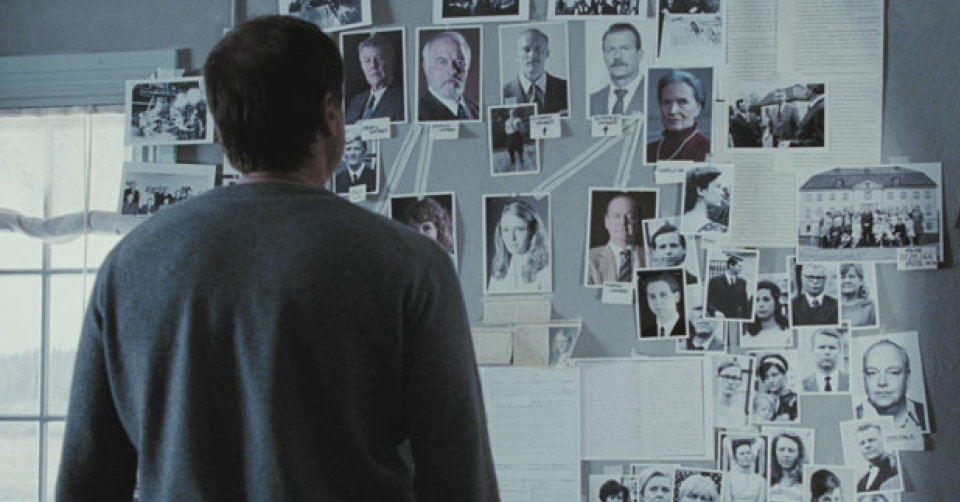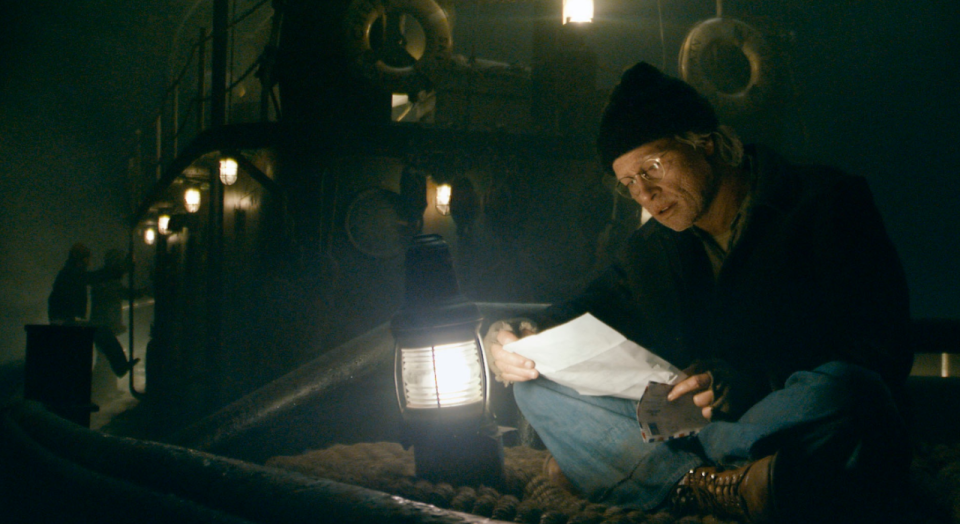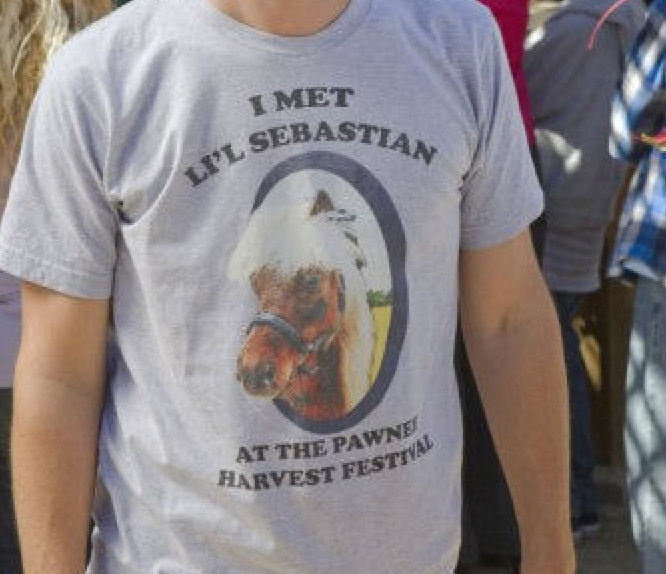From 'Drive' to 'Interstellar': Hollywood's Leading Stand-In Shares His Favorite On-Set Stories

Ryan Gosling and James Henderson on the set of Gangster Squad
Hollywood has always been focused on manufacturing superstars, using the massive machinery of its fantasy factory to push actors (and, sometimes directors) into the spotlight.
It has worked incredibly well, creating an elite group of global celebrities. But the truth is, it takes the efforts of thousands to make a single movie — and if it weren’t for the skills and labors of these unheralded workers, the film industry would have hit its apex with the Lumière brothers.
To recognize the contributions of the movie industry’s working class, and to better understand how our favorite films get made, Yahoo Movies is launching its Below the Line series, which will focus on the people whose names you don’t see up on the marquee (or even the top of an IMDb page).
First up, is James Henderson, an actor who has worked as a stand-in for Hollywood’s leading men since first getting tapped for this task on the set of Steven Spielberg’s A.I. in 2000. In the years since, he has stood in for many of the top actors in the industry, including Brad Pitt, Bradley Cooper, Daniel Craig, Ryan Gosling, Chris Pine, Jude Law, and Chris Pratt. Most recently, he stood in for Matthew McConaughey on Interstellar.
So what does a stand-in do, exactly?
We’re assigned to a specific actor in a film. We watch the actors do the rehearsals with the director, and then we fill in for them while the camera crew, electricians, grips and all of those crew members set up the shot around us. Sometimes it’s tedious and time consuming, and it allows the actors to go to hair and makeup, rehearse their lines more, or just have a bathroom break. Once the shot is ready, and the crew has all their technical things worked out, it allows the actors to come to set and not have to worry about, “Well if I stand here, am I blocking this other actor, or am I in the right light?”
There are other times where I’ll also be a photo double and do insert shots. So I have to watch what the actor does, like when they pick up something with a certain hand. On those insert shots, sometimes that might be my hand you see in the film.
So when have we seen you on screen?
Two come to mind. One was Lemony Snicket’s A Series of Unfortunate Events. Jude Law was originally contracted to do the voice. And the director wanted to be able to have a few shots of his silhouette walking through one of the locations, or finding clues, and him typing on a typewriter. I’d say out of the 11 days that that character was on screen, Jude came in for one day. He shot a lot of stuff, and I did a lot of the other things. So there’s a lot of my silhouette, and some shots of my hands folding up parchment paper, stuff like that.

On Girl With the Dragon Tattoo, I did a lot of insert shots of my hand for Daniel Craig’s research wall (above). There’s tons of detail in that — David Fincher is very specific about detail. So they had a lot of insert shots of him placing a Post-it note or a photo, or highlighting a police report. And I did quite a bit of that, even though Daniel’s hand were in some of those scenes.
Which director has been the most demanding or detail-oriented?
I’d say Fincher is the most detail-oriented. There are others who leave it up to letting the crew do their jobs. Fincher, out of all of them, is probably the most hands-on, because he knows how to do pretty much every job on set. He could be the cameraman if he wanted to, he knows about exposures and color temperatures on film. He’s very hands-on, in terms of every aspect of day-to-day production. And that goes from specific camera moves, to placement of props, to set decoration.
Which actor has been best to work with?
Out of all the guys, Daniel Craig kind of surprised me the most. He plays such serious characters on film that I was surprised to see how much of a jokester he was. He had a great sense of humor. He was very generous as well. He gave me a thank-you card and champagne at the end of that production. He gave gifts to the rest of the crew, he gave a sterling-silver Cross pen to everybody.
Out of the actors I’ve worked with, I feel like I’m probably able to talk most candidly with Ryan Gosling, because he has requested me on a couple of projects, and that was very nice of him. He went out of his way to have his assistant check and see if they could hire me instead of someone else.
What was it like to work on something as big as Interstellar?
A lot of the stuff that they did on the space ships, that was all shot on stage. So I basically did a lot of that work. They actually used me a lot less than they would on other projects, because the actors took so long to get into these big astronaut costumes, that they would leave them on set a lot longer than they normally would.
Did you have to wear a spacesuit?
I’m not exactly sure if it was one of the original mockups that they had used in pre-production, but there was this very similar suit that I had to wear that had metal ring cuffs at the end of the arms, and the ring around the neck and all that stuff. I think I only wore the helmet maybe twice, but for the most part, I wasn’t in the full get up. It was an uncomfortable thing, very heavy.
Probably what I admired most about Christopher Nolan was that almost everything he could do with practical effects, he did. Whether it was the black holes that they projected outside of the screen of the ships that they worked on, or the massive hydraulic gimbals that they put the spaceships on. I think I only saw a green screen once, they did everything as practically as they could.
There was a space-station set on Interstellar, they actually used the same stage as the tugboat set for Benjamin Button. It had this really big pit at the bottom of it, and huge hydraulics they rigged in there. That set was just massive. I have never seen anything that big on a gimbal before.
The main reason they had the hydraulics was the whole space station was curved in a way. I’ve only read certain things about how 2001 was shot, in terms of that one shot where they’re walking around the space station, and I feel like they used some similar practical effects for Interstellar. The space station they were on was curved, so any time they would shoot in a specific section of that station, they would use the gimbal to raise or lower the other side, so that the crew could walk around on semi-level ground, versus having to climb up a steep wall or something.
It reminded me of some of the stuff they did on Star Trek into Darkness. I remember there was one scene with Chris Pine, where the ship stabilizers were off, and everybody was kind of falling off the edge of the long tunnel. They had me and another stand-in laying on the floor to make it look like we were actually hanging from one of the railings. They had another stunt person that was on this rig, where they pulled the rope and had him slide past to make them look like the gravity was pulling them in another direction.
You worked with Fincher again on Benjamin Button, which must have been especially intense.
One thing I remember specifically, Brad Pitt would come in so early in the day. We usually had an 8 a.m. call times for the crew, and he would come in at 4 a.m. just to start putting on the prosthetic makeup.
Because of his long makeup turnaround, sometimes at the end of the day, they would first shoot a scene where they’d get the wide angle, then they’d get his close-ups. And when they’d turn around to get the close-ups on the other actor or actress in the scene, I’d be doing the off-camera dialogue for him. I got to read opposite Tilda Swinton — she’s a very awesome actress and pleasant person.

One time, I was standing in for Brad (above) and the tugboat was being tossed around and there was water on the deck. I was laying down in the water, I was wearing a rain-proof suit, but while I’m down there, Brad was like, “You know what, James, you don’t have to do that, I’ll do that,” because he was already we
And this summer you worked on another spaceship, standing in for Chris Pratt when Guardians of the Galaxy shot in LA.
Chris Pratt is such a nice guy, he was so gracious to the crew. My wife and I watch him on Parks and Recreation, and there was one day when I had the color cover — they always try to put us in the same type of color that the actors wear, because it helps with the lighting. I had this button-up shirt over a T-shirt (below) my wife gave me, and it said “I met Lil Sebastian.”

Even though I had it buttoned up and underneath my color cover, he recognized the top couple of letters and was, like, “Is that a Lil Sebastian shirt?” And I was a little embarrassed, and said “Yeah it is, we love your show.” And he said “That’s so awesome, I’ve got that same shirt at home!”
What was it like working on Drive, a more stylized, small-budget film?
That was interesting, because Nicolas Winding Refn, the director, has a different type of mentality in how he saw the hierarchy of the crew. I remember on the very first day of shooting, he came in and sat down with me and the other stand-in, and chatted with us for at least half of the day. And that rarely happens, in terms of what a director does. I feel like he just wanted to see things from the everyman’s perspective.
I remember the elevator scene, where Gosling stomps the guy’s head in, they had the camera facing up and doing all these different shots. At the time they brought me in, they were trying to figure out how the hands were going to be put on the rail, to make it look like the shot they had already done of Gosling in the wide angle.
The prosthetic head they used for that scene was a trip. But they didn’t let me stomp it, because, I think, they only had one of them and they had to use it on camera. They wanted to make sure they could get it in the first take because if they screwed it up, I don’t think the other head was as good as the first one.

 Yahoo Movies
Yahoo Movies 